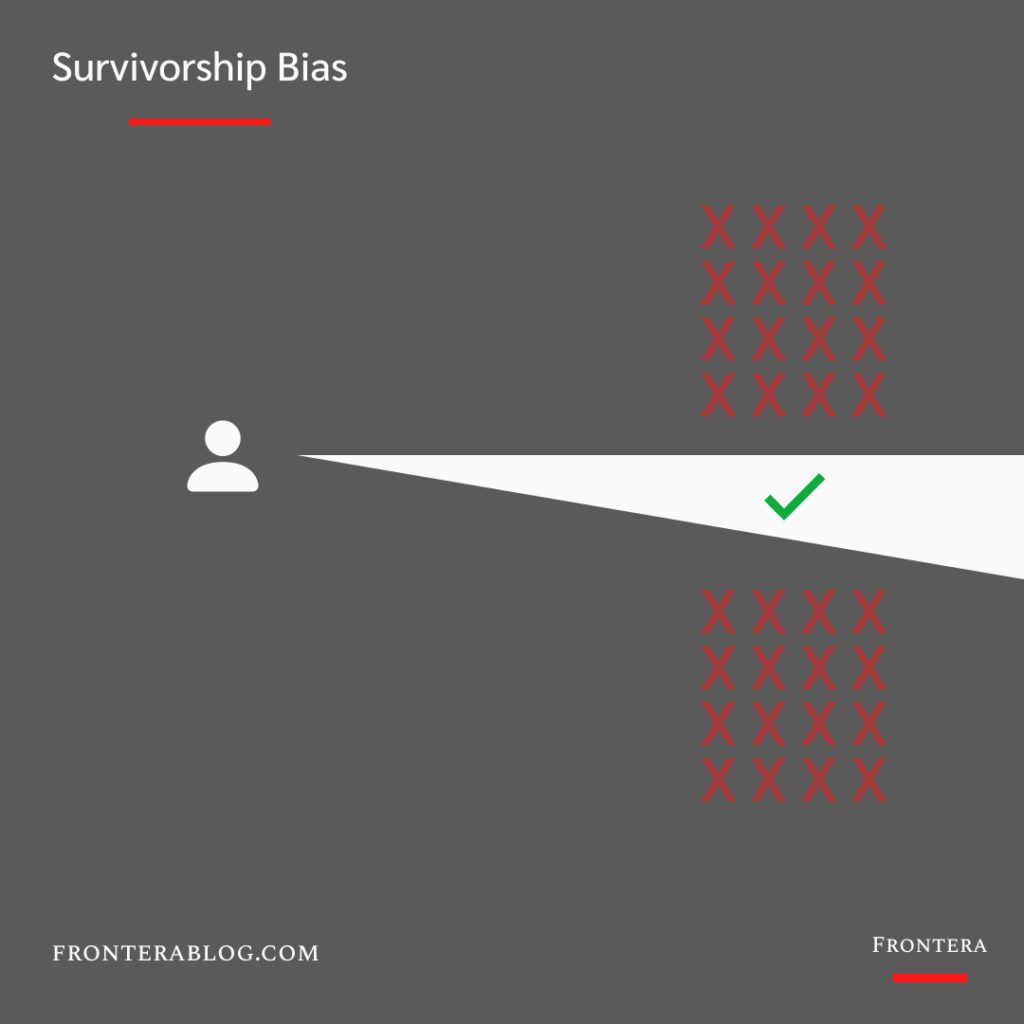Is it possible to build a $200 million media business with only two people?
And with no initial investment?
Well, Joe Rogan proved it is.
He started his podcast with a webcam from his bedroom in 2009.
11 years, hundreds of episodes, and millions of views later, Spotify offered him an exclusive deal.
He was already making millions from YouTube.
But the press said Spotify paid $200 million to convince Rogan.

Even before that deal, Rogan’s success inspired many people.
And started a podcast wave.
After all, who doesn’t want a job where you can talk with interesting people and make millions?
So everybody joined the gold rush.
There were 23,198 new podcasts in 2010.
In 2020 —together with lockdowns— the number increased to 1 million.
When survivors distort our reality
Now, this rush inevitably created new successful podcasts.
But the bigger picture is different.
For every successful podcast, there are thousands of failures.
64% of podcasts never make it past ten episodes.
Out of 2.5 million podcasts listed on Apple podcasts, only 18% are active.
As for any business, podcasts are also from Extremistan where power laws rule.
So a few outliers get the majority of the returns.
But many people joined the wave looking at Rogan’s numbers.
And not the podcast cemetery.
Why?
Because of survivorship bias.
We pay attention to winners.
And forget about losers.
Mathematician Abraham Wald coined the term while working in a research group during Second World War.
The group was working with the US army to reduce plane casualties.
It’s a known story.
Wald and his colleagues mapped out the most hit areas of the planes that survived the battles.
So the US army could strengthen those parts.
But Wald realized something was wrong.
The planes that returned from the battle were survivors.
That meant their analysis showed the least important parts of planes.
But no planes returned with a damaged cockpit or engine.
So the US Army reinforced the unscathed parts.
Casualties dropped.
And Wald became the person behind the most shared image on social media to explain a cognitive bias.
Three more survivorship bias examples:
- Technology Trends: People tend to focus on the winners of technological waves. Like Ford and the car industry in the early 1900s. Or Amazon and the internet in the 90s. This creates the impression that all companies that ride a big trend can be successful — like AI today. But in 1908, there were 253 car manufacturers. Only 4 of them survived.
- Stock Market Returns: People love looking at Warren Buffett’s historical returns. And calculate how much they’d be worth if they invested in Berkshire 50 years ago. I like it too, not gonna lie. But this makes people expect Buffett-like returns when they invest. While the stock market history is full of unsuccessful investors and funds.
- Lottery Effect: People focus on lottery winners. And forget millions who bought a ticket but didn’t get anything. So they keep buying lottery tickets. Even though winning chances are lower than getting struck by a lightning.

So how can you avoid survivorship bias to make better business, investment, and life decisions?
Two tips to avoid survivorship bias:
1. Look for silent evidence
The examples make it clear.
Success is loud.
But failure is silent.
So you’ll always hear success stories when you research business ventures or investments.
Don’t stop there.
Look for failures — or as Nassim Taleb calls it silent evidence.
It’s usually hidden in the data from losers.
Like the planes that never returned, or podcasts that never became a success.
Finding silent evidence will show you the real odds.
So you can take informed risks.
2. Pay attention to patterns
Joe Rogan, Warren Buffett, or J. K. Rowling…
We like hearing success stories.
But individual stories are dangerous.
They create the illusion that they are reproducible.
And cause people to ignore important factors — like timing and luck.
So instead, do as Wald did with the warplanes.
Look for patterns.
If you want to start a podcast, analyzing 20 successful podcasts will show you some patterns you wouldn’t see by analyzing only a few.
It’s the same with any business or product.
Ignore individual stories.
Pay attention to patterns.
–
Enjoyed this article?
Then you’ll love the How Brands Win Newsletter.
Get the “7 Positioning Sins That Cost B2B Brands Millions” guide when you join. It’s free.
